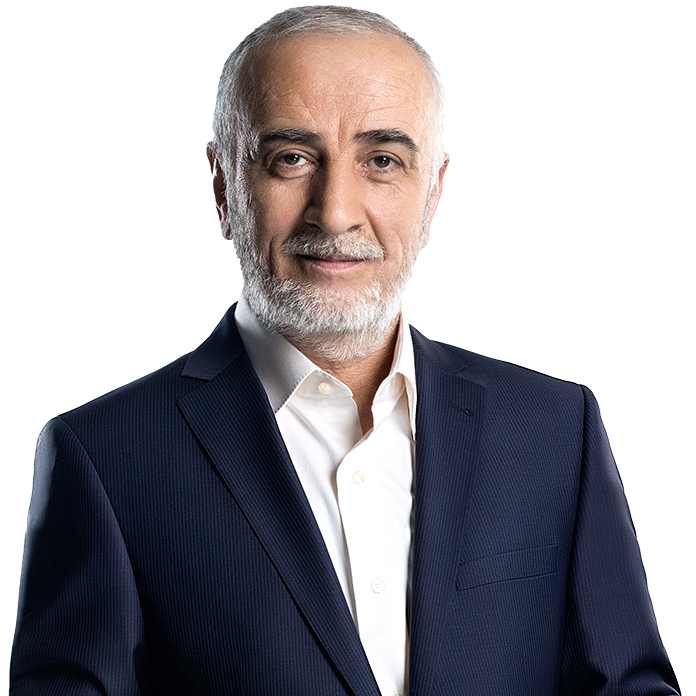One of the craziest showdowns of the Cold War era, which lasted from the late 1940s to the early 1990s, was America’s Star Wars program, which aimed to destroy any intercontinental ballistic missiles fired at the U.S. by the Soviet Union using laser beams controlled from space.
The project, which was made public during the presidency of Ronald Reagan, pushed America’s only rival at the time, the Soviet Union, towards launching its own similar project. Inspired by science fiction movies, this fanciful project is said to have bankrupted the Soviet economy.
In a nod to the Reagan era, former U.S. President Donald Trump had also established the Space Forces Command. For Trump, outer space was also a battleground. Now, the Soviet Union is no more, but Washington has already designated China as its New Cold War rival.
According to the claims frequently made in U.S. media, China and Russia are close to leaving America behind when it comes to new generation military technologies.
According to these views, China has already surpassed the United States. In a Dec. 4 article penned by Brendan Cole for Newsweek, extensive space was devoted to expert opinions on whether Russia had outplayed the United States in the field of hypersonic missiles. Reports that China is conducting its own hypersonic missile tests were used to spread propaganda, urging the U.S. to keep up with the times.
General David Thompson, deputy chief of operations for the U.S. Space Force, warned that Washington was not as advanced in hypersonic programs as either the Russians or the Chinese. Thompson said on Fox News channel on Sunday that both Beijing and Moscow are quickly making big leaps in the field of space technology, and thus the United States must keep up with this pace.
According to Thompson, who pointed to the fact that China may have the first strike capability in space soon, one of the reasons behind the establishment of the Space Force was to counter China's breakthroughs in space technology.
U.S. Secretary of Defense Lloyd Austin, in a speech made at the Reagan National Defense Forum, held in California on Saturday, underlined the fact that the Chinese army is on track to become a worthy rival of the U.S. in Asia and all over the world.
Stating that the U.S. is not a country afraid of a little healthy competition, Austin said: "America isn't a country that fears competition. And we're going to meet this one with confidence and resolve— not panic and pessimism."
There are frequent recurring allegations that China is preparing to invade Taiwan in the near future. Lloyd Austin said that he interpreted China's warplanes that were hovering over Taiwan as a "rehearsal" and that the U.S. was determined to help Taiwan defend itself. U.S. Secretary of State Antony Blinken warned that Russia's attacks on Ukraine and China's attacks on Taiwan would have dire consequences.
These harsh statements directed at China over the crisis in Taiwan and against Russia in the context of the Ukraine crisis show that the New Cold War will trigger a frenzied arms race. As a matter of fact, a report published by the Pentagon in November included predictions that China was rapidly expanding its nuclear power. In the report in question, it was noted that China could increase the number of nuclear missiles under its disposal to 1,000 by 2030.
The French Navy conducted a naval exercise called POLARIS 21 in the Western Mediterranean and Atlantic Ocean between Nov. 18 and Dec. 3, with the U.S., England, Italy, Greece, and Spain also participating in the war games.
The exercise served as a demonstration of the new generation naval warfare technology. The commander of the French Navy, Admiral Pierre Vandier, claimed that China had tripled its naval power in 10 years, and that Beijing had surpassed even the capabilities of the U.S. Navy.
According to Vandier, who pointed that future conflicts will take place at sea and in the cyber realm, France and its allies should be prepared to face potential threats militarily.
The fact that the arms race is taking place among the five permanent members of the United Nations Security Council, which was established to protect so-called world peace, is another peculiarity. The U.S., China, Russia, England, and France, also known as the "Nuclear Five," are the largest suppliers of weapons in the global arms market. The planet we live on is slowly drifting into chaos; have you noticed?




















